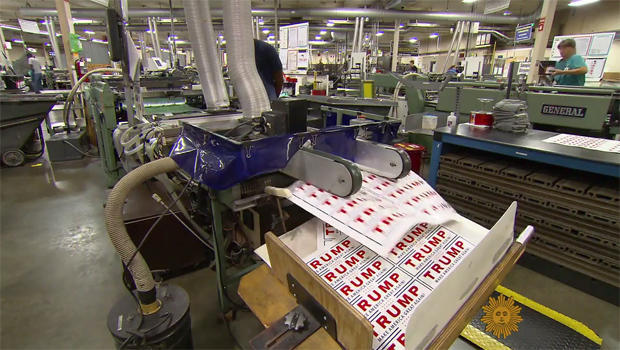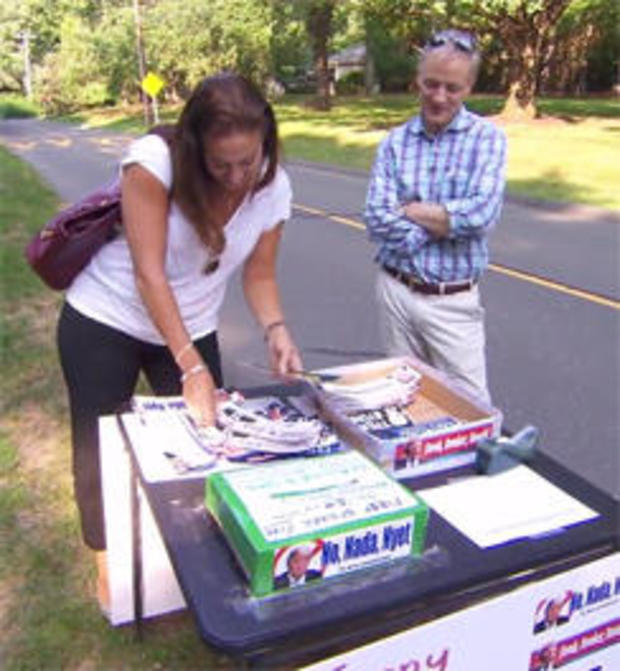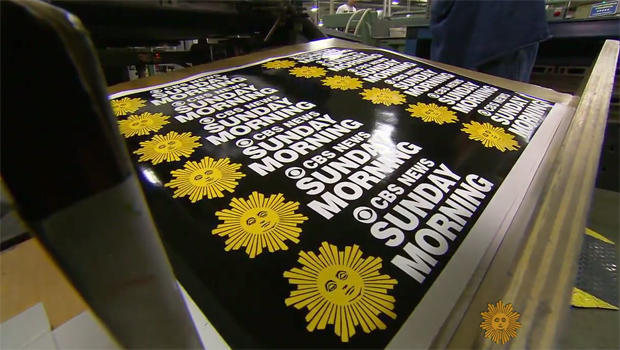Bumper stickers: A vehicle for political expression
Campaign bumper stickers are part of a hallowed (if sometimes raucous) tradition, as Martha Teichner now tells us:
It’s been said that Americans consider their cars extensions of their personalities, so it does seem that cars and politics were made for one another.
“As early as there were cars, there were ways of decorating your car to support your candidate,” said Harry Rubenstein, who heads the Division of Political History at the National Museum of American History in Washington, D.C.
He showed Teichner some of the metallic applications (including photographic images) that, before the bumper sticker came along in the 1940s, could weather the storm and decorate your car. “They come in all different shapes and forms,” he said. One license plate-like, dating from 1928, featured a picture of Herbert Hoover.
But then came World War II, and along with technology (including day-glo colors) and adhesive paper. It wasn’t long before somebody put them together.
That somebody was Forest Gill, of Kansas City, Missouri.
“He put the idea of the bright colors and the sticky paper together to come up with a bumper sticker,” said Gill’s son-in-law, Mark Gilman, the chairman of Gill Studios, now located in Lenexa, Kansas. “His innovation was to make the bumper sign self-sticking.”
America’s post-war love affair with the automobile guaranteed that these traveling billboards got around. But tourist attractions -- not political campaigns -- were the original users.
1952 was the first real bumper-sticker presidential election: Eisenhower vs. Stevenson. Ike vs. Adlai.
Today, there are thousands of bumper sticker producers. Gill Studios is one of the bigger ones. In an election year, this one company prints 40 million, 15 million of those political.
Gill prints whatever message a customer wants, positive or negative. The company has no political agenda.
That is definitely NOT the case for the people who commission them.
How toxic is this year’s presidential race? Any one of these little punch lines that David Ellis is selling outside his Westport, Conn., home could be a 3 x 10 invitation to vandalize somebody’s car.
“I’m not so sure that I’m gonna put ‘em on my car, at least not yet,” one customer told Ellis. “I think I’m a little nervous about what might happen.”
Automotive free speech can have consequences. You might have seen the story in May about the South Carolina tow truck driver who refused to tow a disabled woman’s car, because she had a Bernie sticker on it.
“And I was like, ‘Wait, really?’ And he says, ‘Yes, ma’am,’ and just walks away,” Cassy McWade said.
“I have the right to service who I want to,” said pro-Trump tow truck driver Ken Shupe. “Just something came over me. I think the Lord came to me and said, ‘Get in your truck and leave.’”
Not only are bumper stickers inflammatory, they get no respect compared to all the other political swag out there.
Tallahassee, Florida stockbroker John Clark paid $12,000 for a 1920 campaign button featuring Democratic nominee James Cox, and his running mate: Franklin Delano Roosevelt.
But what about his bumper stickers?
“Bumper stickers, maybe $5, perhaps $10, if it’s very rare,” Clark said.
He’s got hundreds of them anyway -- the odder, the better. One for Barry Goldwater is a play on Au, for gold, and H20, for water.
Once free, now you have to pay for bumper stickers, mainly so that campaigns can scoop up your name, phone number and email address. Gill Studios has noticed they’re good for something else: An informal polling data point.
Teichner asked, “Do you ever kind of have an informal correlation between the highest number of bumper stickers and who wins?”
Gilman replied, “Well, I can say that, since we’ve been making bumper stickers, every winner of the national election has used the most bumper stickers.”
Who’s ahead this year? According to this totally unscientific method of figuring it out, Hillary (with orders of 2.3 million this year), ahead of Trump (at 800.000).
To quote a terrible cliché, only time will tell. Meanwhile, here’s OUR vote for best bumper sticker:
For more info:
- Smithsonian’s National Museum of American History, Washington, D.C.
- Bumper stickers from Gill Studios, Lenexa, Kansas



